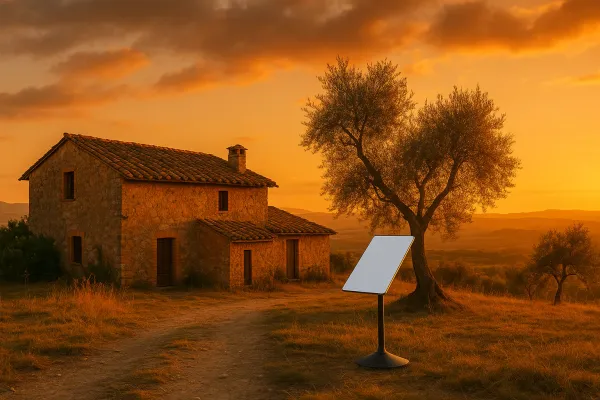Rustic Retreat
Hot Projects
Live broadcasts and documentation from a remote tech outpost in rustic Portugal. Sharing off-grid life, the necessary research & development and the pursuit of life, without centralized infrastructure.
 Subscribe to our new main project Rustic Retreat on the projects own website.
Subscribe to our new main project Rustic Retreat on the projects own website.

Apollo-NG is a mobile, self-sustainable, independent and highly-experimental Hackbase, focused on research, development and usage of next-generation open technology while visiting places without a resident, local Hackerspace and offering other Hackers the opportunity to work together on exciting projects and to share fun, food, tools & resources, knowledge, experience and inspiration.
Last Saturday, instead of breakfast, we wanted to have more geiger counters. So we had an early morning soldering session in the open air and with plenty of sunshine we finished two more 1.0 prototype boards so that we have more active PiGI's for tests and further development.
Back in the early 90's, when I first tried GNU/Linux, there weren't many things I could really do with my X session, due to lack of knowledge, skill, confidence and available open-source software. However, I did play with xearth, a program that renders a somewhat accurate image of our planet. A couple of years later it was replaced by xplanet which offered a lot more features and eye-candy options.
With NASA's release of the visible-earth program we suddenly had open access to high detail day/night, bump (relief) and specular (reflection) maps of the earth which can be used as textures with xplanet.
After playing a bit more with xplanet again for a couple of days in order to get realtime satellite positions directly on the desktop (see xfce-planet) I got frustrated by the cloud layer again. There was a time when some people put up mirrors of the near current (3-6 hours) global cloudmap we could use as a source for xplanet, but now it seems to have been split into some paid subscription model for high resolution and the low resolution image is distributed via CoralCDN, which, although I like the concept, failed constantly in delivering the global cloudmap.
By sheer accident I stumbled upon https://github.com/jmozmoz/cloudmap, so I tried it locally and it worked like a charm which in turn led to the idea to offer the image I need anyways to everyone else who desires to have a fresh high detail cloudmap, without having to set up the required infrastructure. And with that the Global Cloudmap Generator Robot was born, who creates a new cloudmap every three hours and then commits and pushes it to the public global cloudmap repo to use github's infrastructure as CDN we can hopefully rely upon.
And you can just get the latest map by grabbing:
https://raw.githubusercontent.com/apollo-ng/cloudmap/master/global.jpg
If you're interested in how it all works or want to setup your own/independent cloudmap generator, here is a simplified rundown:
Continuing on the final aspect of JamesT's very nice exploration of PiGI, we want to further examine the possibilities to create randomness from the output of a Geiger-counter. Of course we are using a PiGI as testbed for our experiments.
True randomness, in the sense of “provably unpredictable” is not easily available on a computer. Good arguments can be made that the available sources of entropy like clock jitter, floating analog inputs, network traffic etc, combined with the algorithmic magic of /dev/random and /dev/urandom are more than adequate for all non-cryptographic purposes, and probably unpredictable enough to safely use them in cryptography without worrying to much.
But paranoia and cryptography run hand in hand and using radioactive decay as source of entropy is an interesting application of physics to provide access to the elusive “true” randomness on a computer.
While the half-life gives the duration after which a particle has decayed with a probability of 50%, the exact moment of decay can not be predicted in any way. So a sample of radioactive material creates a stream of events in a Geiger-counter, which, due to the enormous amounts of atoms even in the tiniest sample, averages to a steady rate, but the specific event times (or delays between events) are unpredictable.
In the most fundamental form, our task is to produce a stream of equally probable 0's and 1's. To do this, we compare the last two delays between measured events. If one is longer than the other, the next bit is a 0 and if it is shorter it is a 1.